Xijin Ferry (西津渡), also known as the Xijin Ferry Historical and Cultural District, is situated in the northwest part of Zhenjiang City, just a fifteen-minute walk east from Jinshan Park. Dating back to 2000 years ago during the Three Kingdoms period, Xijin Ferry served as a crucial ferry terminal. Even the renowned Italian explorer Marco Polo disembarked at Xijin Ferry during his visit from Yangzhou to Zhenjiang in the Yuan Dynasty. Over time, due to the gradual northward shift of the riverbank, the ferry port ceased to exist, leaving behind the ancient streets of Xijin Ferry perched along the mountainside of Yuntai Mountain.
The historic streets are paved with weathered bluestones, flanked by traditional brick-built residences and mountain walls, exuding a sense of antiquity. This area stands as the most abundant, concentrated, and well-preserved region of cultural relics and historic sites in Zhenjiang.
The ancient streets aren’t extensive; a leisurely stroll might lead one to traverse the entire area in about half an hour. For those still enthralled by the experience, retracing the path back to the Ferry Pavilion allows exploration of the Old Wharf Cultural District. Here, numerous retro buildings like the Deshi Antique House offer opportunities for memorable photographs. Furthermore, ascending to the Yuntai Pavilion atop the hill behind the ancient streets provides a panoramic view of the city, especially enchanting during the evenings when the old street district illuminates.
Table of Contents
- Basic Information
- Location and Transportation
- Highlights of Xijin Ferry
- Vlog about Xijin Ferry
- Useful Tips Summarized from Reviews
- Attractions near Xijin Ferry
Basic Information
| Estimated Lengh of Tour | 1 hour |
| Ticket Price | The area is free, but you need to buy tickets for the attractions: Yuntai Pavilion: 20 RMB Guanyin Cave + Lifesaving Association: 30 RMB |
| Opening Hours | 24 hours a day; Attractions operate from 9.00 to 16.15 |
| Telephone Number | 0086-0511-85288555 |
Location and Transportation
Xijin Ferry is situated at the foothills of Yuntai Mountain in the western part of Zhenjiang City, Jiangsu Province. Its geographical coordinates are approximately 32°22′ north latitude and 119°43′ east longitude. This historical site is intricately connected to the Poshan Plank Road, a mountainous pathway that adds to the charm of the surroundings.
To get there, tourists can take bus 8, 14, 15, 29, 38, 49, 67, 102, or 130 and get off at Xijindu Stop (西津渡)
Highlights of Xijin Ferry
The Former British Consulate
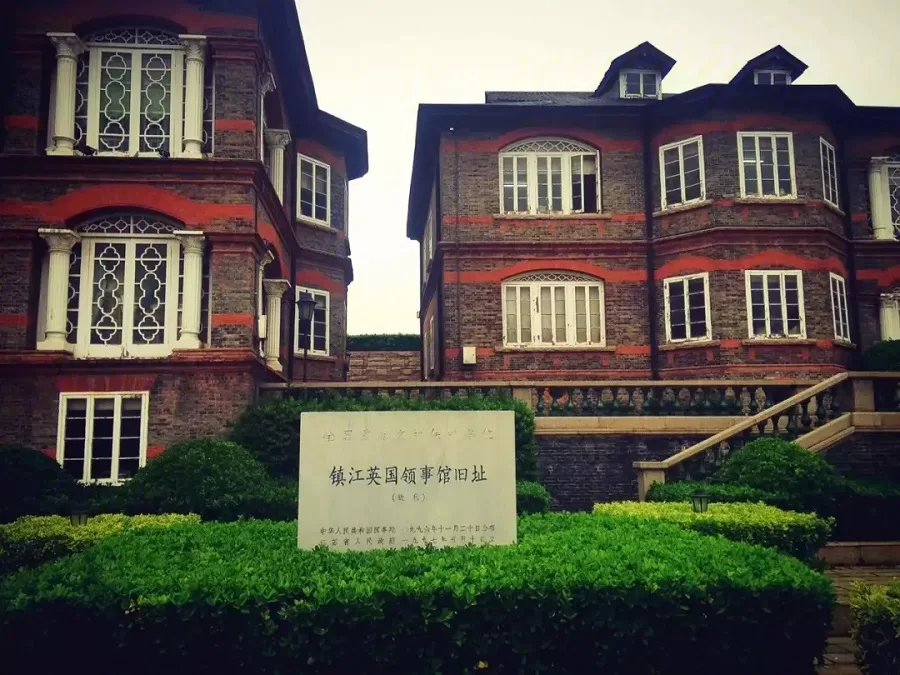
The former British Consulate stands out as a captivating relic of the late 19th century. In the aftermath of the Second Opium War, the area at the foot of Yuntai Mountain along the Yangtze River was designated as the British concession. In 1864, the British Consulate was erected, presenting an architectural amalgamation of European classical design and a distinct “East Indian” style, marked by a series of five interconnected buildings. The structure, characterized by its arch-like arcades, features brick and wood construction, with two main stories and occasional sections extending to three stories. The walls showcase a blend of blue and red bricks, creating a visually striking façade. Today, the former British Consulate is a part of the Zhenjiang Museum, housing a collection of over 30,000 artifacts spanning various historical periods. Notable items include the Mandarin Duck Vase from the Western Zhou period, a Spring and Autumn era bronze plate with dual dragon heads, and a celadon jar from the Three Kingdoms Era.
Yuntai Pavilion
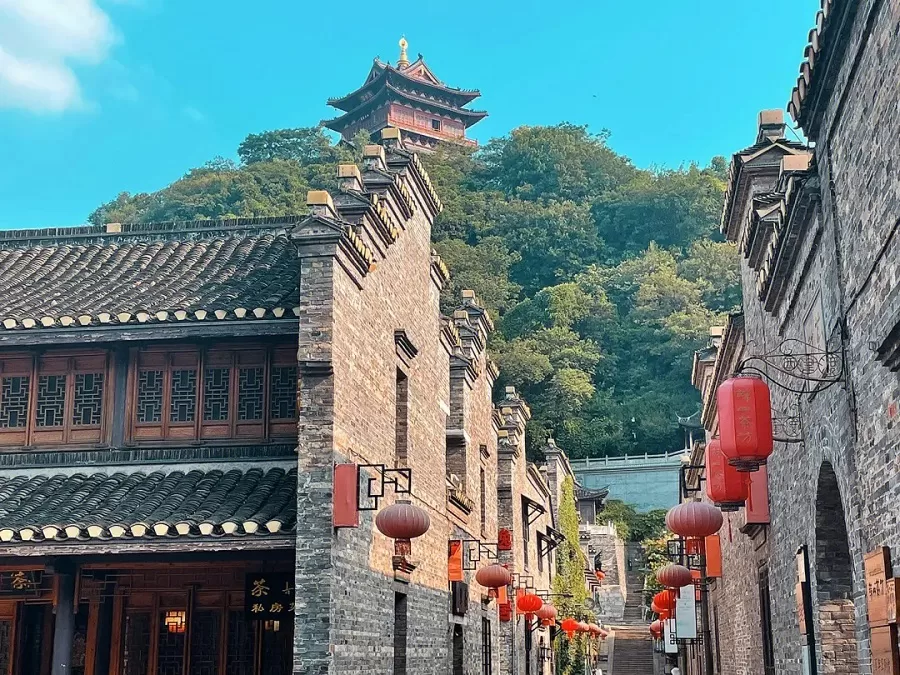
Yuntai Pavilion, a grand architectural gem, graces the landscape with its traditional design reminiscent of the Song and Yuan dynasties. It stands as the largest historical building in Zhenjiang, offering a unique glimpse into the city’s urban development through the “Zhenjiang City Development Theme Museum” housed within. The museum meticulously portrays the historical evolution and changes in the city over more than 3,000 years. Visitors can ascend to the fourth floor, enjoying an unobstructed panoramic view of Zhenjiang. The tiled roofs and pink walls of Xijin Ferry create a picturesque scene, with the cityscape featuring a harmonious blend of historic charm and modern skyscrapers. The juxtaposition of Jinshan Hill, Jiaoshan Hill, Beigushan Hill, and other prominent landmarks creates a mesmerizing panorama that captivates the eye.
Lifesaving Association
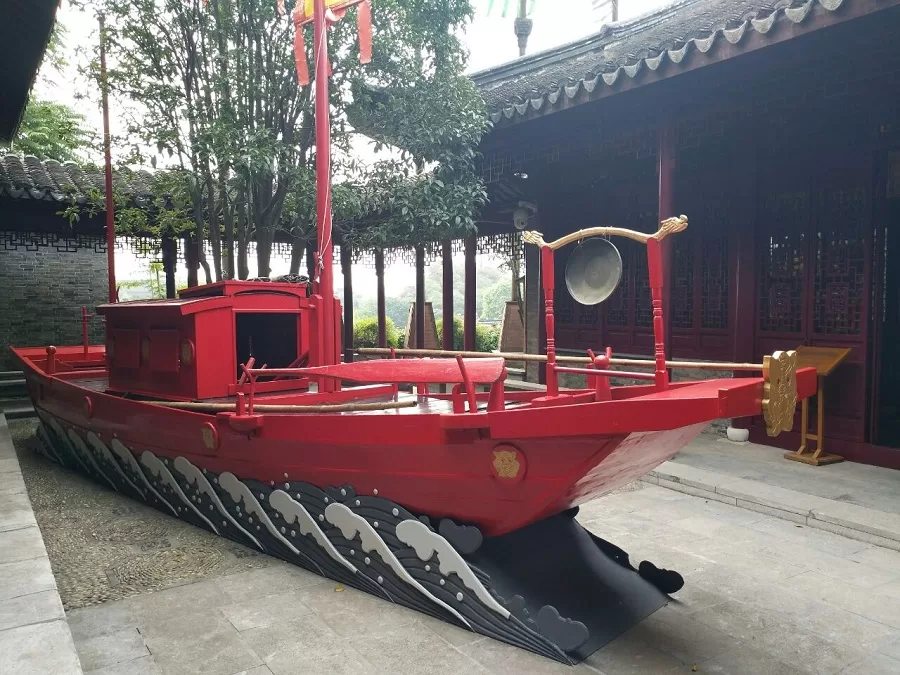
The historical significance of Xijin Ferry extends beyond architectural marvels to include the longstanding tradition of the Lifesaving Association, founded over 300 years ago during the 31st year of the Kangxi era (1693). In fact, the origins of the Lifesaving Association can be traced back to the Song Dynasty. True to its name, the association is dedicated to water rescue and embodies a charitable spirit. In the pre-Sui and Tang periods, the Yangtze River in Zhenjiang spanned over 20 kilometers in width, reducing to around 10 kilometers during the Tang Dynasty. The unpredictable winds and waves posed a constant threat to boatmen and ferry passengers, leading to the establishment of the Lifesaving Association at Xijin Ferry. This organization played a crucial role in voluntary rescues of drowning individuals and salvaging sunken vessels, highlighting its humanitarian mission in the realm of water safety.
Shaoguan Stone Pagoda
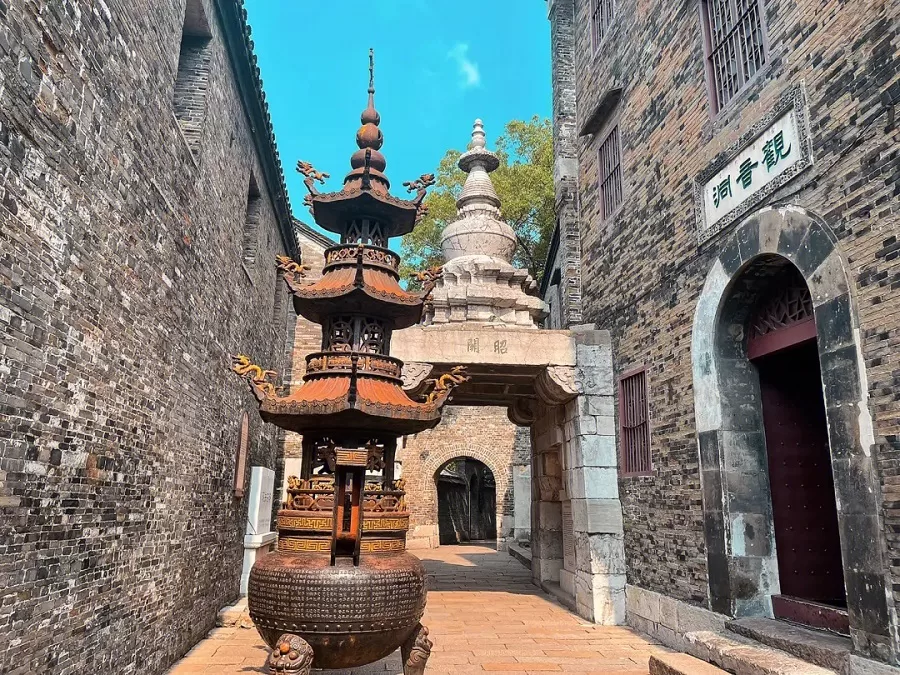
Shao Guan Stone Pagoda stands as a testament to the Yuan Dynasty’s architectural prowess. Constructed during the reign of Emperor Haishan of the Yuan Dynasty, this overstreet stone pagoda was overseen by master craftsman Liu Gao. The pagoda earns its name “Shao Guan Stone Pagoda” due to the inscription of the characters “昭关” (Zhao Guan) on both the east and west sides of its base. Soaring approximately 5 meters in height, the pagoda consists of five distinct sections – the base, the body, the neck, thirteen heavens, and the pinnacle – all intricately carved from bluish-green stones. Notably, during a significant restoration project, a remarkable discovery was made within the pagoda’s central chamber: two “Mandala” copper plates. These Mandala feature nine Avalokiteshvaras and nine Yellow Wealth Deities, each of the latter holding nine treasure-spouting rats. In Buddhist symbolism, rats serve as guardians of treasure vaults, and capturing them signifies seizing wealth and fortune.
Guanyin Cave
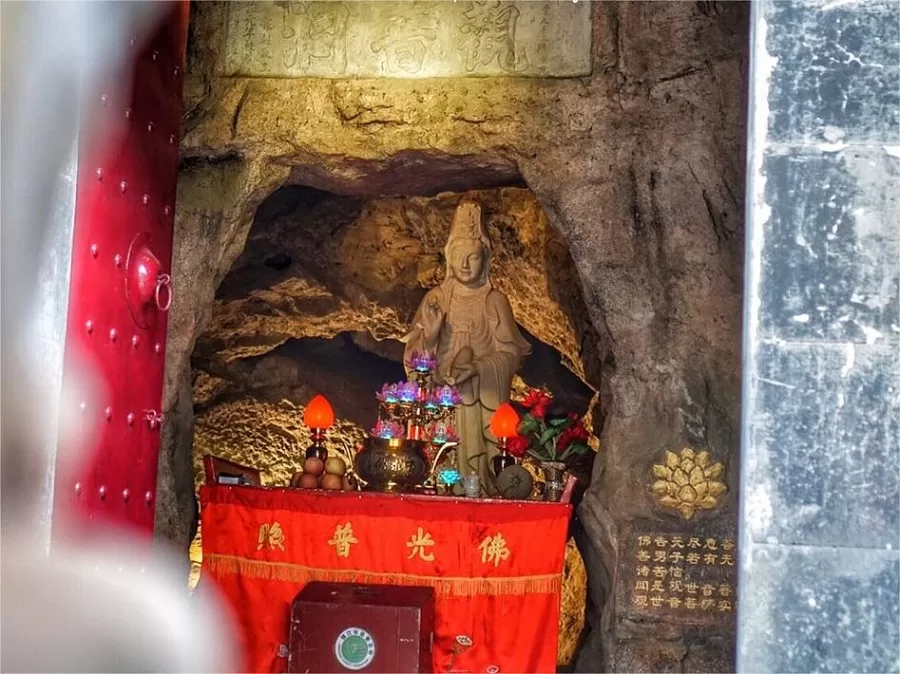
Adjacent to the Shao Guan Stone Pagoda is the enchanting Guanyin Cave, steeped in legend. According to the tale, the compassionate Bodhisattva Guanyin witnessed a tragic scene of boats sinking and lives lost on the river during one of her celestial journeys above Zhenjiang. Touched by the plight of the victims, Guanyin extended her divine intervention, rescuing those struggling in the tumultuous waves and guiding them safely ashore. In gratitude for Guanyin’s benevolence, people carved the Guanyin Cave into the mountainside near the Shao Guan Stone Pagoda as an expression of their prayers for peace and safety. The origins of the cave date back to the Song Dynasty, with a restoration occurring in the ninth year of the Xianfeng era (1859) during the Qing Dynasty. Inside the cave stands an elegant white stone statue of Guanyin. The Bodhisattva is depicted with a serene and tranquil demeanor, holding a pure vessel in her left hand and gesturing with her right, embodying compassion and peace.
Waiting Pavilion

The historical charm of Xijin Ferry extends to the quaint “Waiting Pavilion” or “Dai Du Ting,” a place where people of ancient times awaited ferries, welcomed or bid farewell to loved ones, or sought refuge from rain. Legend has it that Emperor Qianlong once stopped at this pavilion during his travels. Concerned about the emperor feeling lonely, his ministers prepared fishing gear, allowing him to indulge in the pastime of fishing. On that particular day, Emperor Qianlong’s luck was extraordinary – he caught fish after fish, delighting in a bountiful harvest. Little did he know, his attendants had discreetly arranged a large net underwater, filled with an abundance of fish. The emperor’s repeated success was thus no surprise. The “Waiting Pavilion” not only embodies historical significance but also adds a touch of imperial charm to the rich tapestry of Xijin Ferry’s stories.
Vlog about Xijin Ferry
Useful Tips Summarized from Reviews
Parking Suggestions for Self-Driving: If traveling by car to Xijin Ferry, parking is available at the surface lot in the scenic area. However, due to limited spaces, it’s advised to park at the underground parking lot on the opposite side of Xijin Ferry. The underground lot is spacious, with ample parking and a reasonable fee of five yuan per visit.
Entertainment and Performances: Enjoy the performances by a senior art troupe playing the saxophone and singing near a small pond, complete with a makeshift stage. In the evenings, there are actual performances, creating a pleasant atmosphere.
Low Crowds, High Enjoyment: The number of visitors is relatively low, contributing to a great overall experience. The ambiance is serene and enjoyable.
Recommended Local Eateries:
Try the delicious Northern and Southern Pancakes (南北煎饼) near Ali Industrial Park and the Zhenjiang Museum.
Explore the Nearby Yong’an Market: Yong’an Market, close to Xijin Ferry, offers a nearby shopping experience. Stroll through the market in the morning, enjoying local delicacies such as Ba Ba Pastry, Li Ji Pastry, and Jiu Niang Pastry.





